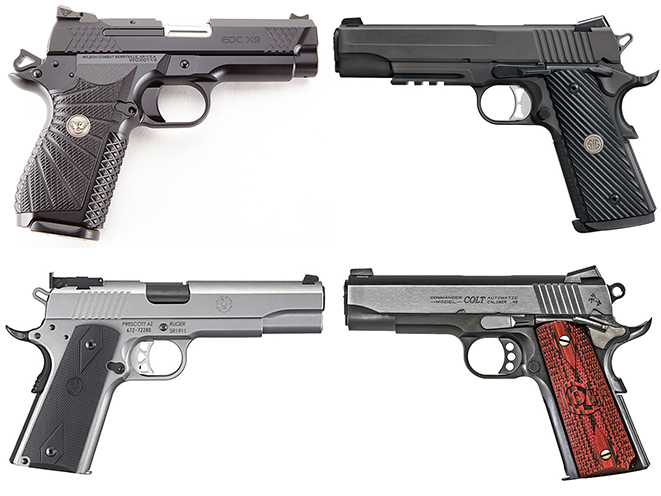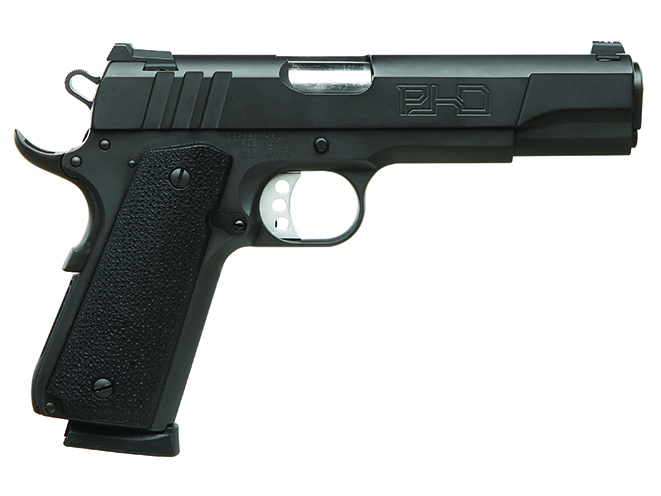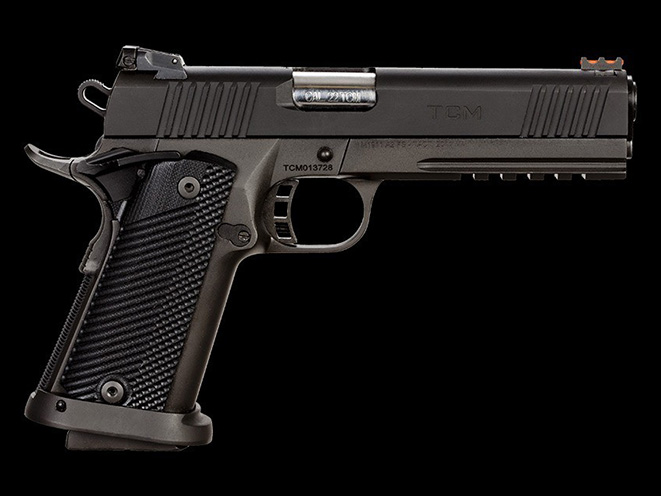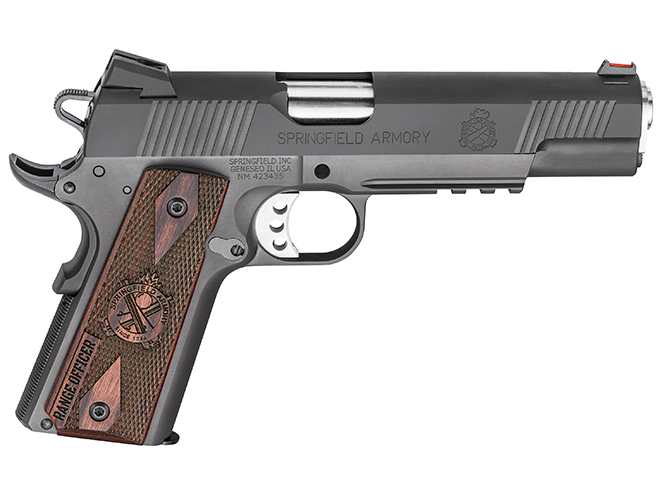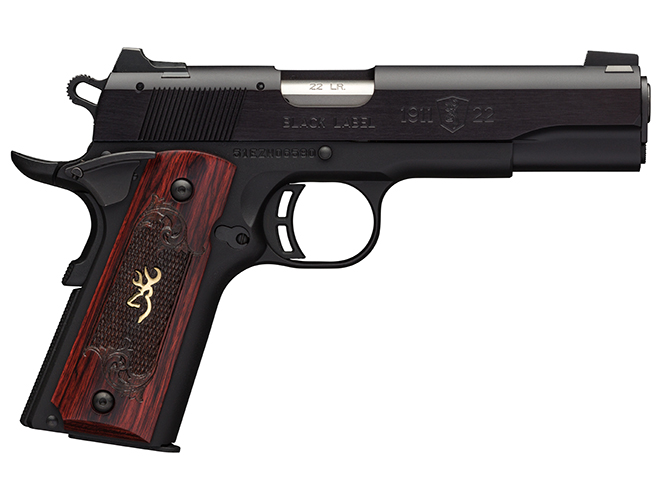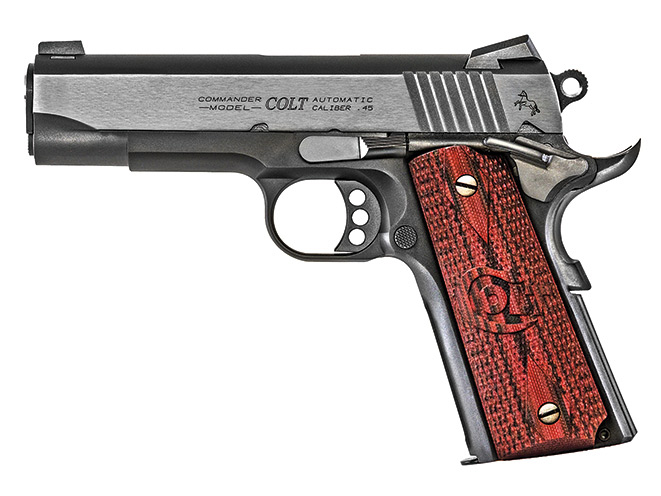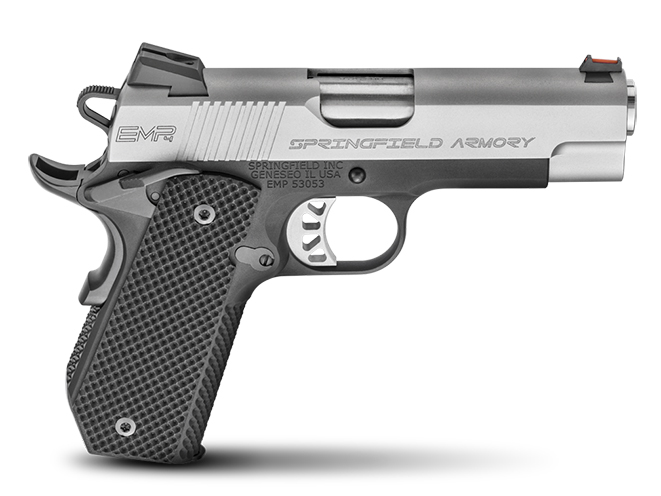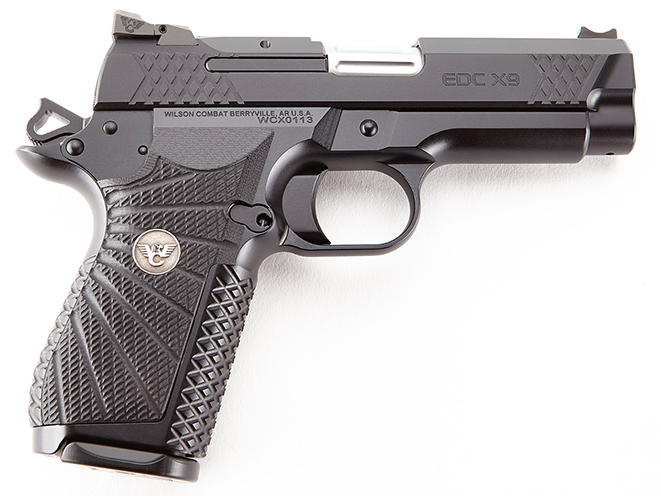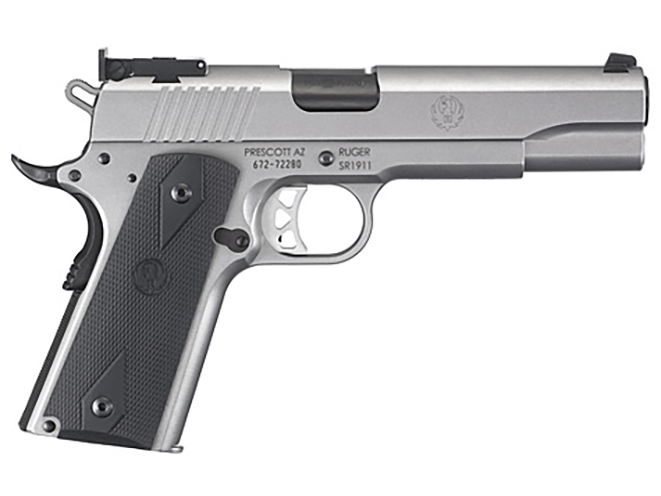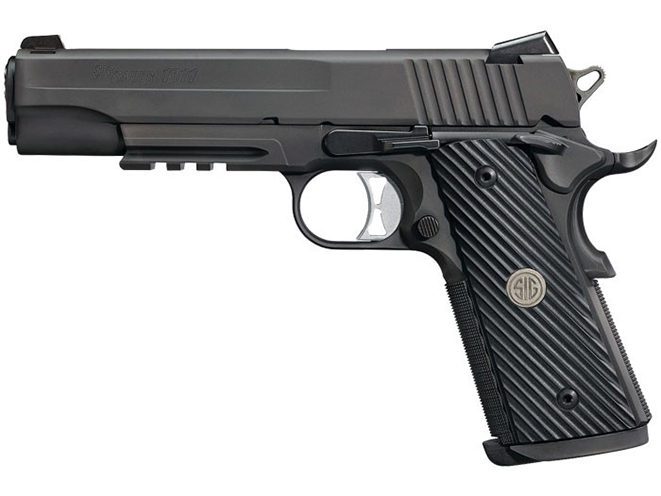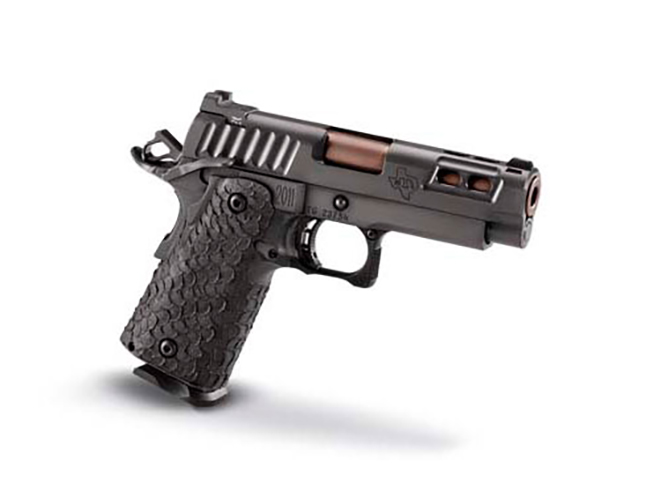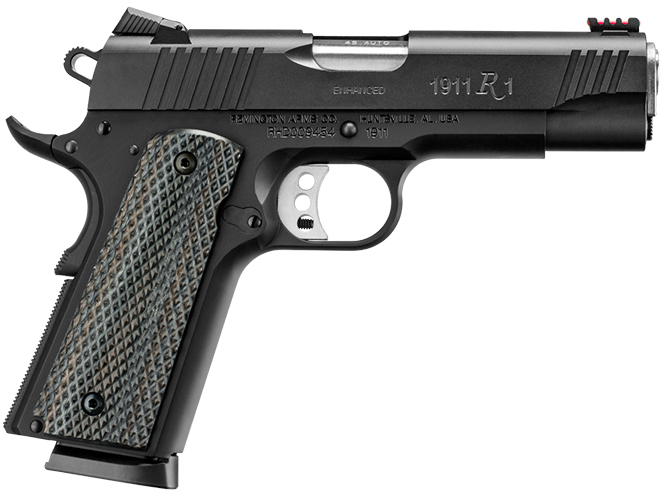When learning a new firearm, I will generally do some dry-fire practice. This allows me to really concentrate on what I am doing, thinking through each step without any visual distractions. I may even close my eyes to focus on what I feel. I also have a tendency to talk to myself as I practice (and many times when I shoot). This verbalization helps me remember important steps like disengaging the safety. Finally, when learning a new trigger, I like to watch my trigger press. Knowing exactly what it looks like helps me when I start missing shots during competition. I know what I need to feel, how it should look and I repeat to myself, “Press the trigger.” For the 1911 pistol:
- RELATED STORY: 11 Custom Gun Shops For 1911 Pistols
1. I began by working on the safeties and practicing my draw. I practiced making sure to disengage the safety on the way out of the holster, and reengaging it once I made the conscience decision to stop shooting. This had to become a habit, part of my gear manipulation.
2. Dry fire, dry fire, dry fire. Holding the 1911 pistol in my hand, I watched my trigger press. Then I closed my eyes and felt the trigger press. I kept racking the slide and dry firing until I could confidently touch the trigger without the handgun going off inadvertently.
Advertisement — Continue Reading Below
3. I practiced drawing and pressing the trigger with the goal of consistently disengaging the safeties and not having any unexpected shots. I practiced this until I was confidently and successfully handling the 1911-style pistol.
4. Now I was ready for live fire at the range. You should always dry fire a couple of times before going live. I did this quite a few times, making sure I worked the safeties successfully every time.
5. Once confident I could successfully run my 1911 pistol, I loaded live rounds. Since this was the first time I was shooting my 1911 pistol, I shot close-in targets. As I shot, I really tried to think about how the gun felt—what it felt like when it went off, how I handled the recoil. My goal was to shoot smoothly, not quickly.
Advertisement — Continue Reading Below
- RELATED STORY: 8 Compact 9mm 1911 Pistols
6. After a few days of shooting my Springfield and feeling confident in my motor program, I started shooting for distance.
7. Finally, the time came to increase my speed. Before ever heading back to the range, I practiced dry firing at home first with a timer. It took many days at the range before I started shooting for distance and speed. Then I began my training for the Crawfish and Bianchi Cups with the NRA’s Action Pistol course of fire.
This article was originally published in “Combat Handguns” May/June 2017. To order a copy, visit outdoorgroupstore.com.
Advertisement — Continue Reading Below
